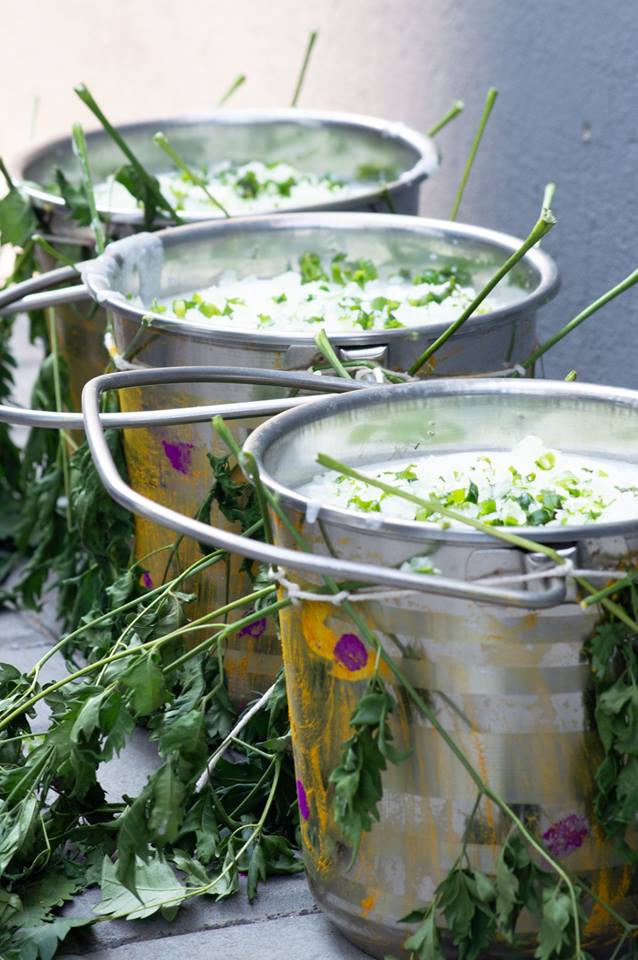
The very first article I posted on TamilCulture.com was about the ‘Porridge People of South Africa’. The basic description is that those of us with South Indian and Tamil heritage are colloquially referred to as Porridge. The British empire expanded into their newest colony ‘Natal’ and needed some cheap labour, and so shipped over a bunch of wide-eyed, adventure-seeking Indians (India was a colony of Britain at the time) to come work on the sugar cane fields. Little did these Tamil Nadu residents know (a majority were Tamil) that indenture was a fancy synonym for slavery. Their non-existent English was another factor as they could not communicate their distress at the broken promises...there were no gold laden streets. I find it quite ironic that in 1860 Tamilians in South Africa spoke very little English and now in 2018 we speak almost no Tamil.
Socio-economic issues arose, barracks that were set up to house the ‘coolies’ were basically shanty towns with a disproportionate number of males and lacking in basic services that, even today, is a reality for those at the bottom of our economic scale.
Fast forward to 2018...I am a 38-year-old fourth-generation South African woman. My ancestry tells me that I am Tamil. My surname, although a variation in spelling, has strong Tamil roots. I listen to thevaram music...I also listen to Tupac and Katy Perry and all sorts of modern nonsense. I go to the temple. I am Hindu and practice Hinduism in the ‘Tamil’ way. I utter Tamil prayers that I now understand thanks to google and their English translations. I look typically South Indian (naturally curly hair that is mostly straightened, dark brown skin tone and large eyes). I live in a multicultural city and my friends are global citizens.
But why the term Porridge? Why is this significant to our cultural identity as it is to our spirit? Why is it that we are immediately recognizable as Porridge People? And why is this an isolated term that no one else can understand or have it properly explained?
Two years ago I discovered the spiritual teachings of Tamil scholars with whom I interacted with and found that their teachings resonated so strongly with me. The most interesting aspect of this journey was in allowing myself to connect with divine energy, and today my family and I celebrate the Divine Mother’s energy during a period dedicated to Her. But I wanted to get a more intellectual and scholarly view than my own, which is now based purely on my instincts, and my isolated exposure to traditional practices. I set out to learn more and interviewed Guru Deena Govender of the local temple, Shree Ganesha Prathanay Kootum in Buccleuch, Johannesburg for his story on Amman worship in the South African Tamil context.
_____
Guru Govender moved to Johannesburg in 2002 to develop his career in the finance sector. He soon realised that there was a spiritual calling that he simply could not ignore. As a Tamil scholar, his passion for transforming the lives of people around him was always prominent, and friends and family leaned on him for spiritual guidance. As he observed the movement of Indians from Durban to Johannesburg he became aware of the strong need for a modern & simplistic but still traditional & cultural approach to meet the needs of the Tamil community. The country’s political history and the Group Areas Act revealed a profound distinction in culture between those Tamils who grew up in Durban and against those in Gauteng (previously known as Transvaal).
He also observed that people were turning away from Hinduism and increasingly lacked interest in Tamil culture, and in some cases, were converting to other religious paths because of the accessible resources they provided. In the case of youth, a lack of connection with the community and a sense of belonging, which religious gatherings previously provided, led to instances of substance abuse and other socio-cultural issues. His main objective was to transform lives through various mechanisms, mainly by providing a sanctuary for those seeking a connection to the divine Mother.
Guru Govender’s role is an interesting one. There are ongoing attempts to modernise the experience in a temple, but the overall goal is to inspire and preserve one of the world’s most ancient cultures. Storytelling is an important part of this process and so festivals are held at the temple where he shares some insight. He is very passionate about increasing participation and encourages people to engage more...he feels that in today’s age we must welcome a more modern approach using technology and perhaps embracing non-traditional musical instruments such as the keyboard or guitar. His temple uses social media very effectively with live feeds on Facebook so that those who are not able to physically attend can still be impacted.
The temple is dedicated to Aadi ParaShakti (loosely translated as Ancient Supreme Energy). Worship of the Divine Mother has always had its roots for Tamils in South Africa and is what also brought about the colloquial term ‘Porridge People’. Guru Govender explains the facets that encompass Shakti: Sariya Shakti (cleanliness), Kriya Shakti (action), Yoga Shakti (physique) and Nyana Shakti (knowledge). He explains that embracing these core facets in one’s personal journey allows for self-development and that when one enters the temple space they can leave behind their vasanas (desires, status, materialism) and fuel on divine energy. Some of the infinite numbers of the divine Mother’s values are love, compassion, kindness, and truthfulness. In the context of South Africa, Tamils do many things right. We are good business people and academics holding multiple degrees, and many work in high-profile jobs. We have a great history of establishing temples in South Africa and so there are a number of Tamil places of worship. We love celebrating our religious festivals, and we do try, as much as possible for a diaspora, to preserve our culture and heritage. Maintaining culture and heritage as well as language is always a challenge considering that Tamil is not actively spoken outside of the religious space. The negative is that we are not united as a Tamil community as we could be...we are segmented and have scattered individualistic programmes. There is huge potential to shift away from the settlement mentality of our past and pave a more united Tamil identity.
About the Porridge Prayers or more appropriately MarieAmman Poojay...
In ancient times there was a lot of sickness in communities and also a small pox epidemic. In contrast, today’s age contains more viral diseases, some of which are airborne. Families fast for a period of ten days and offer the fermented porridge to the divine Mother but it is also a period of personal sacrifice and devotion to Aadi ParaShakti, so that her energy can sustain livelihoods and keep families united. Three generations ago, Tamil families consisted of two parents and sometimes up to 18 children. The sacrifices those parents made to nurture and educate their children owed to their devotion to the Mother. And so the Amman prayer has strong significance for Tamils in South Africa. Together with this deep devotion, there’s also the experience of transcendental meditation which is rarely understood.
Devotees tap into a semi-conscious state and are able to access divine energy. Transcendental meditation is practiced in most ancient cultures around the world but in South Africa, it is celebrated at festivals such as kavady and firewalking. Many families who celebrate the ‘Porridge Prayers’ do so in their homes. They spend hours preparing foods and offerings for Amman and invite friends and family to participate. Some households do a vegetarian offering and some offer meat. This leads us to the discussion on sacrifices. Guru Govender suggests that there are various forms of sacrifice that one undertakes which translate over different aspects of one’s life; from nine months of gestation to grandparents who take care of grandchildren whilst parents are working. He says that in ancient times sacrificing to the Mother meant that you offer what is within your means to do so and the same principle applies today.
On the topic of us making more effort to educate ourselves on traditions, Tamil language and teachings, Guru Govender says that the responsibility lies on us as individuals to access the vast resources available on the internet. He also firmly states that it is important to question the information provided by priests and gurus so that we may have a better understanding of why we are doing specific things and for what greater purpose. He believes that a guru is someone that a devotee should build trust in and that it is the responsibility of the guru to simplify the religious context in a relateable way. South Africa is unique. We do not have a great number of South African Tamil priests but we do have a large population of Tamils looking for leadership. Guru Govender says that when South African Tamils and Hindus practice our devotion with the foundation of love, then we are well on our way to elevating our spiritual lives. Our responsibility is also to each other as Tamils. We have to help each other, especially at a time when the world is so fast-paced and where our focus takes us further away from spirituality. Guru Govender has many plans and ideas on providing resources to the Tamil and Hindu community and extends an open invitation to all to experience the wonders of the Divine Mother’s blessings.
As an average South African Tamil, I find it stimulating to keep learning about things and experiencing spirituality as a way of preserving my heritage. It is an ongoing journey and I hope that my articles can reach readers who have strong roots with South Africa or who want to know more about who we are as a people. To share some of your own South African Tamil stories or make queries please mail [email protected]

























